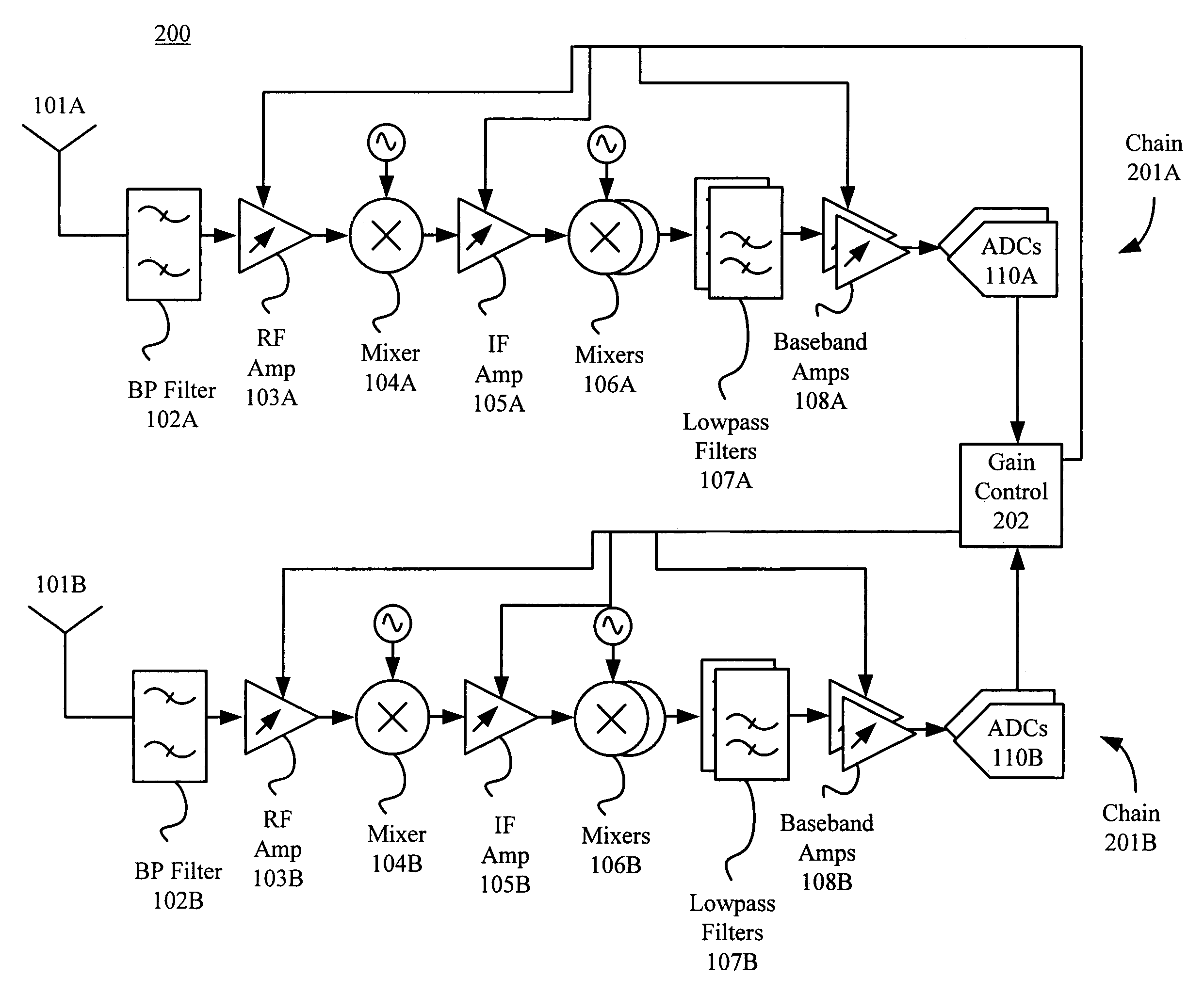Multi-chain signal detection and gain control for automatic gain control systems
a gain control and multi-chain technology, applied in gain control, diversity/multi-antenna system, polarisation/directional diversity, etc., can solve the problems of bit errors in the signal, overloading and possibly damaging certain components, and portions of the signal taking the longer path can undetectable lose energy
- Summary
- Abstract
- Description
- Claims
- Application Information
AI Technical Summary
Benefits of technology
Problems solved by technology
Method used
Image
Examples
Embodiment Construction
[0094]Although illustrative embodiments have been described in detail herein with reference to the accompanying figures, it is to be understood that the invention is not limited to those precise embodiments. They are not intended to be exhaustive or to limit the invention to the precise forms disclosed. As such, many modifications and variations will be apparent to practitioners skilled in this art.
[0095]For example, an adjacent blocker is defined as an interference signal adjacent to or overlapping the frequency band of interest, whereas an alternate blocker is defined as an interference signal farther away from the frequency band of interest. With a worst case of 6 dB for an adjacent blocker and 32 dB for an alternate blocker, a received blocker at the ADC input can be 12 dB higher than the in-band signal. Therefore, in one embodiment, an analog channel filter and / or anti-aliasing filter may advantageously be placed before the ADCC to perform an adjacent block rejection of 4 dB an...
PUM
 Login to View More
Login to View More Abstract
Description
Claims
Application Information
 Login to View More
Login to View More - R&D
- Intellectual Property
- Life Sciences
- Materials
- Tech Scout
- Unparalleled Data Quality
- Higher Quality Content
- 60% Fewer Hallucinations
Browse by: Latest US Patents, China's latest patents, Technical Efficacy Thesaurus, Application Domain, Technology Topic, Popular Technical Reports.
© 2025 PatSnap. All rights reserved.Legal|Privacy policy|Modern Slavery Act Transparency Statement|Sitemap|About US| Contact US: help@patsnap.com



